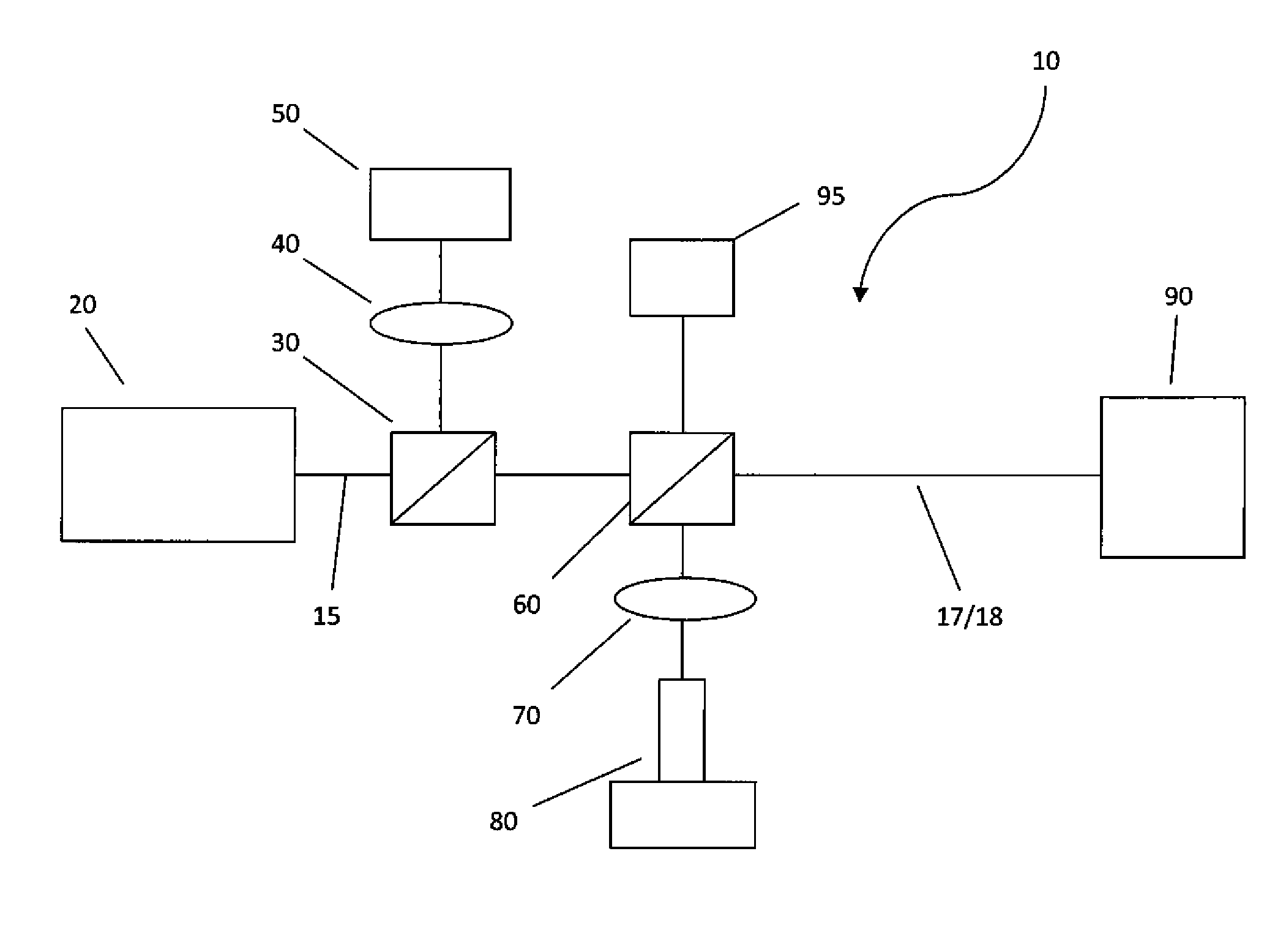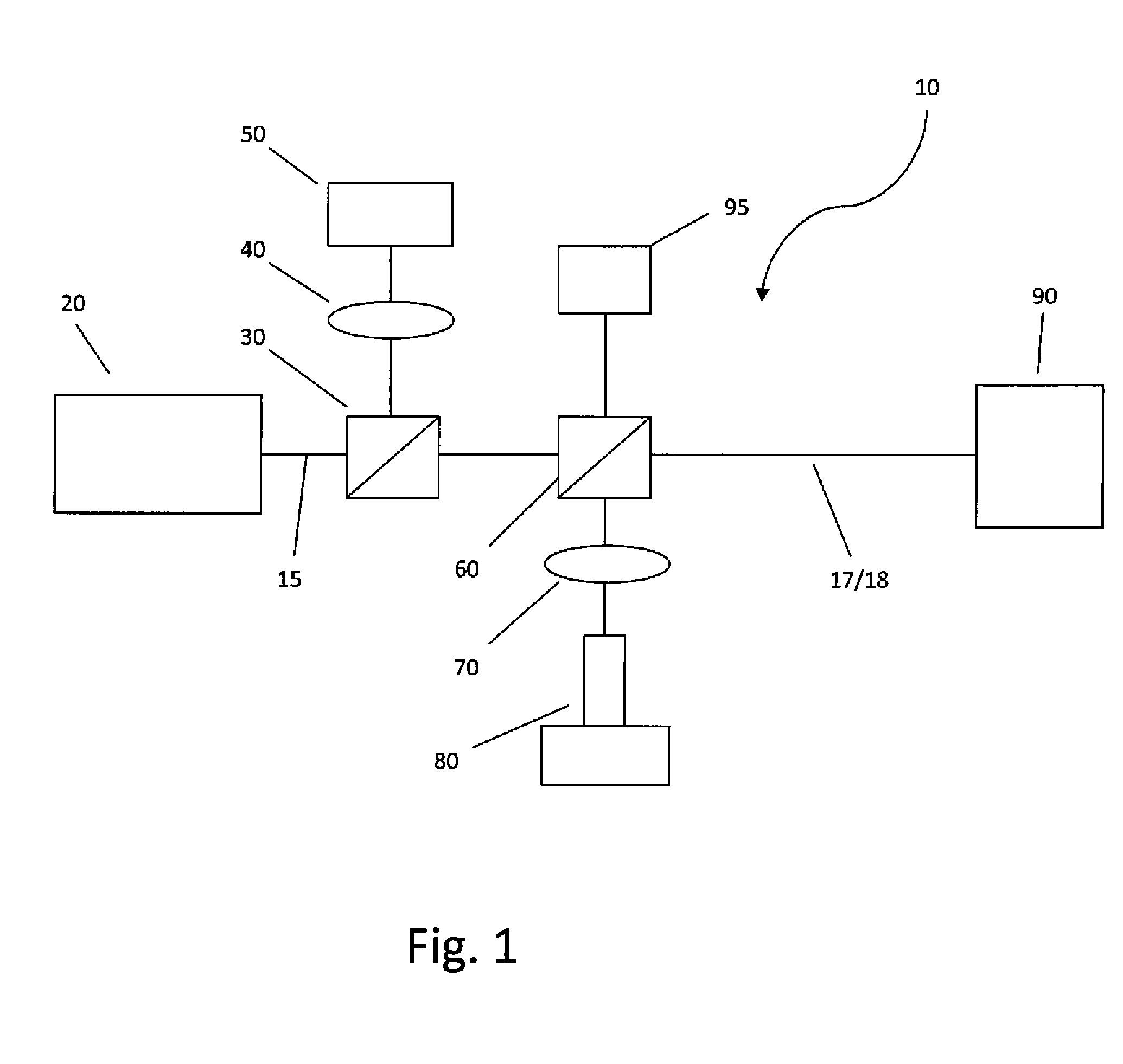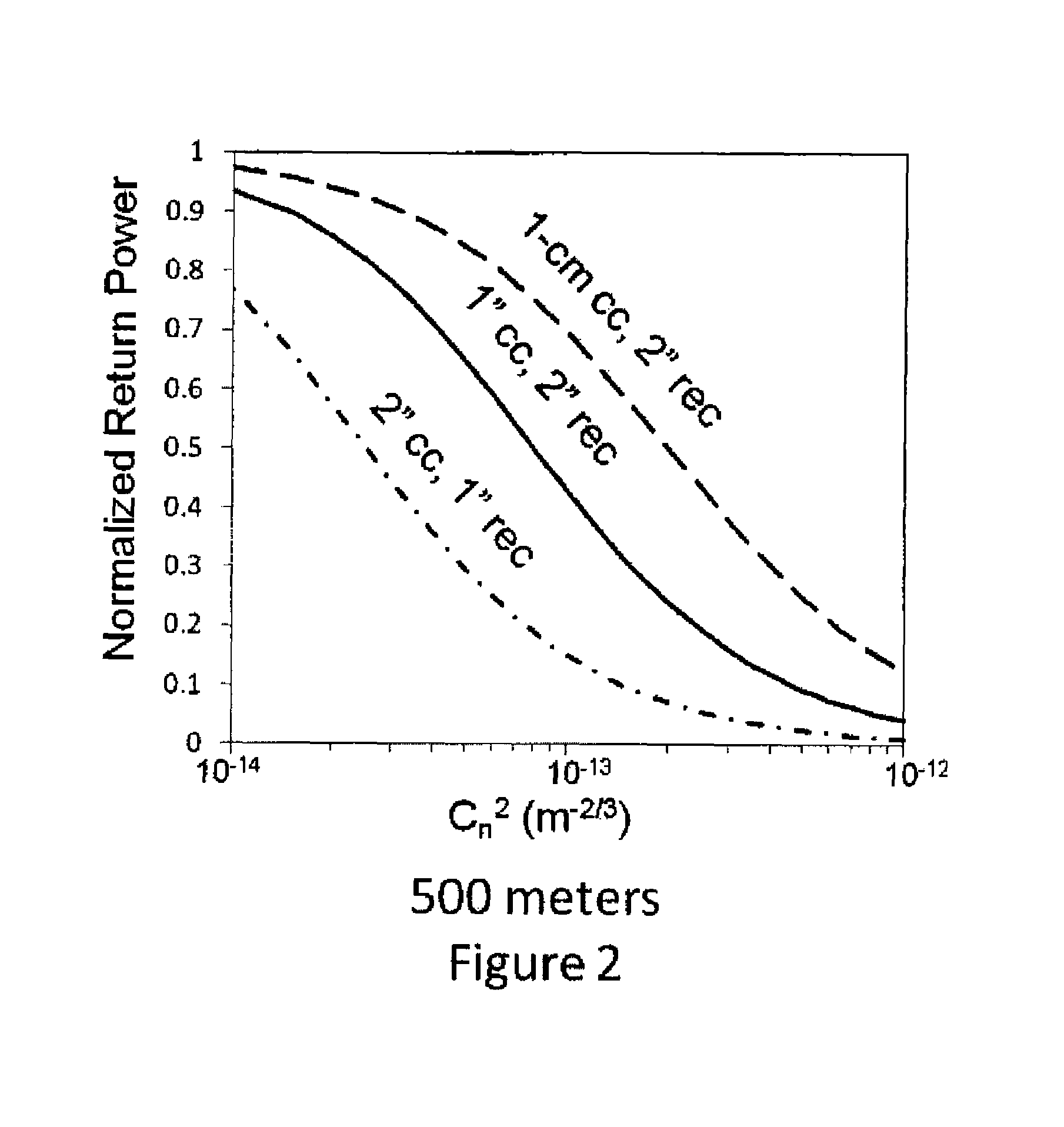Laser and corner cube refractive-index structure parameter system
- Summary
- Abstract
- Description
- Claims
- Application Information
AI Technical Summary
Benefits of technology
Problems solved by technology
Method used
Image
Examples
Embodiment Construction
[0026]Referring to FIG. 1, a preferred embodiment of the subject invention includes a laser-and-corner cube system, 10, wherein the laser, 20, is a TEM00 laser which emits a spatial profile beam, 17, that is very nearly Gaussian (greater than 95%) and that does not change as it propagates, i.e. from when it emerges from the laser right into the far field. Such TEM00 laser beams can be generated by Nd:YAG lasers available from Litron Lasers NA, in Bozeman Mont., or CrystraLaser diode-pumped solid state continuous wave lasers, available from CrystaLaser, in Reno, Nev. The most preferred laser, 20, for measurements at ranges of approximately 500 meters is such a continuous laser with a power variable from 38 to 62 mW, a spot size at the transmitter of 5.5 mm, and a measured divergence angle (θT) of 1.45×10−3 rad, the wavelength should preferably be near IR, with a particularly preferred wavelength of 1064 nm.
[0027]Continuing to refer to FIG. 1, preferably a 90 / 10 beam splitter, 30, is ...
PUM
 Login to View More
Login to View More Abstract
Description
Claims
Application Information
 Login to View More
Login to View More - R&D
- Intellectual Property
- Life Sciences
- Materials
- Tech Scout
- Unparalleled Data Quality
- Higher Quality Content
- 60% Fewer Hallucinations
Browse by: Latest US Patents, China's latest patents, Technical Efficacy Thesaurus, Application Domain, Technology Topic, Popular Technical Reports.
© 2025 PatSnap. All rights reserved.Legal|Privacy policy|Modern Slavery Act Transparency Statement|Sitemap|About US| Contact US: help@patsnap.com



